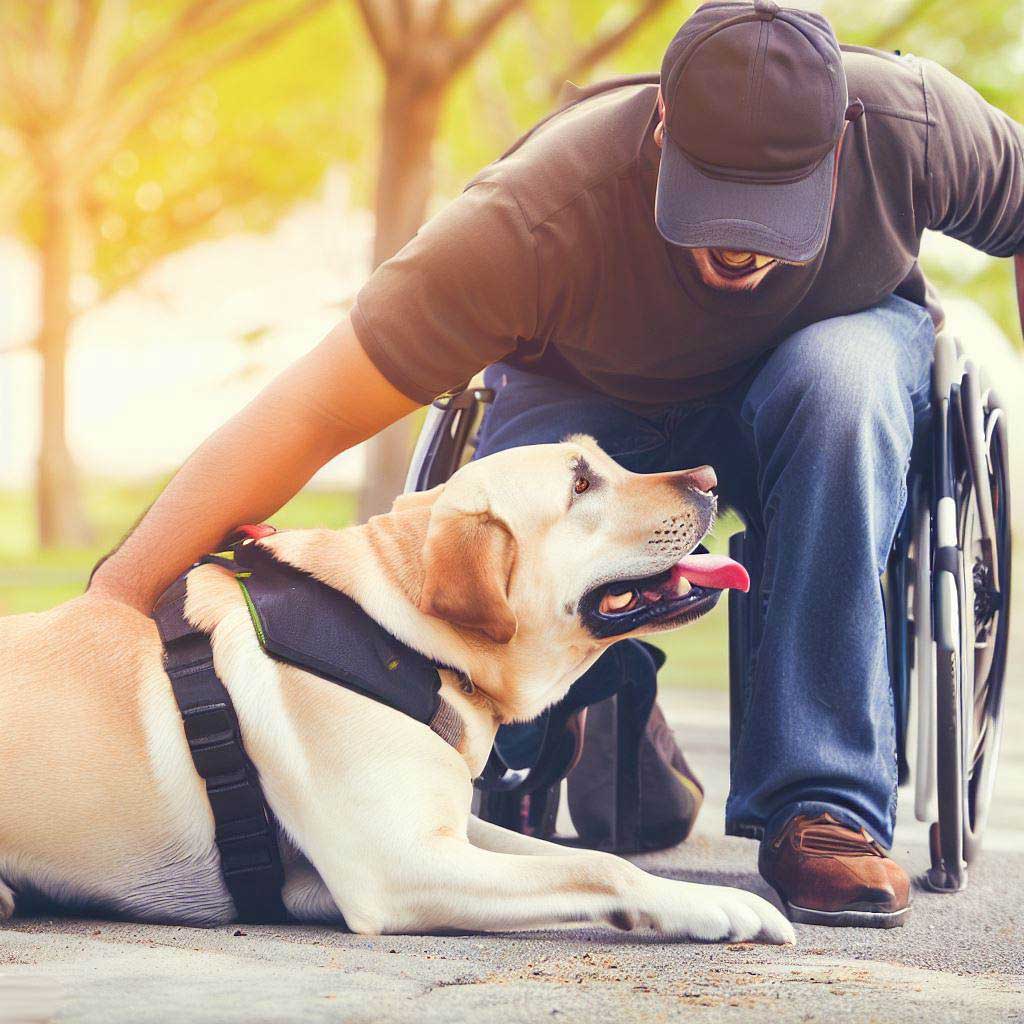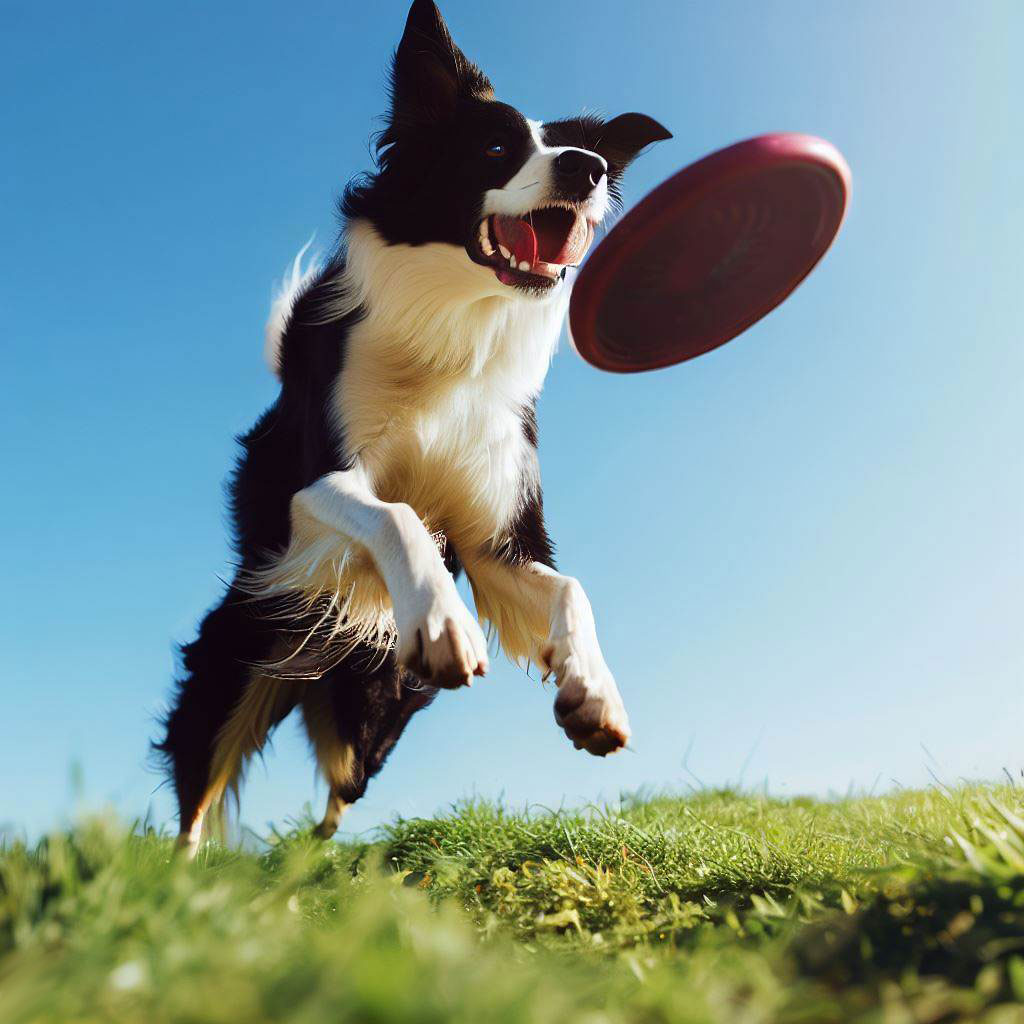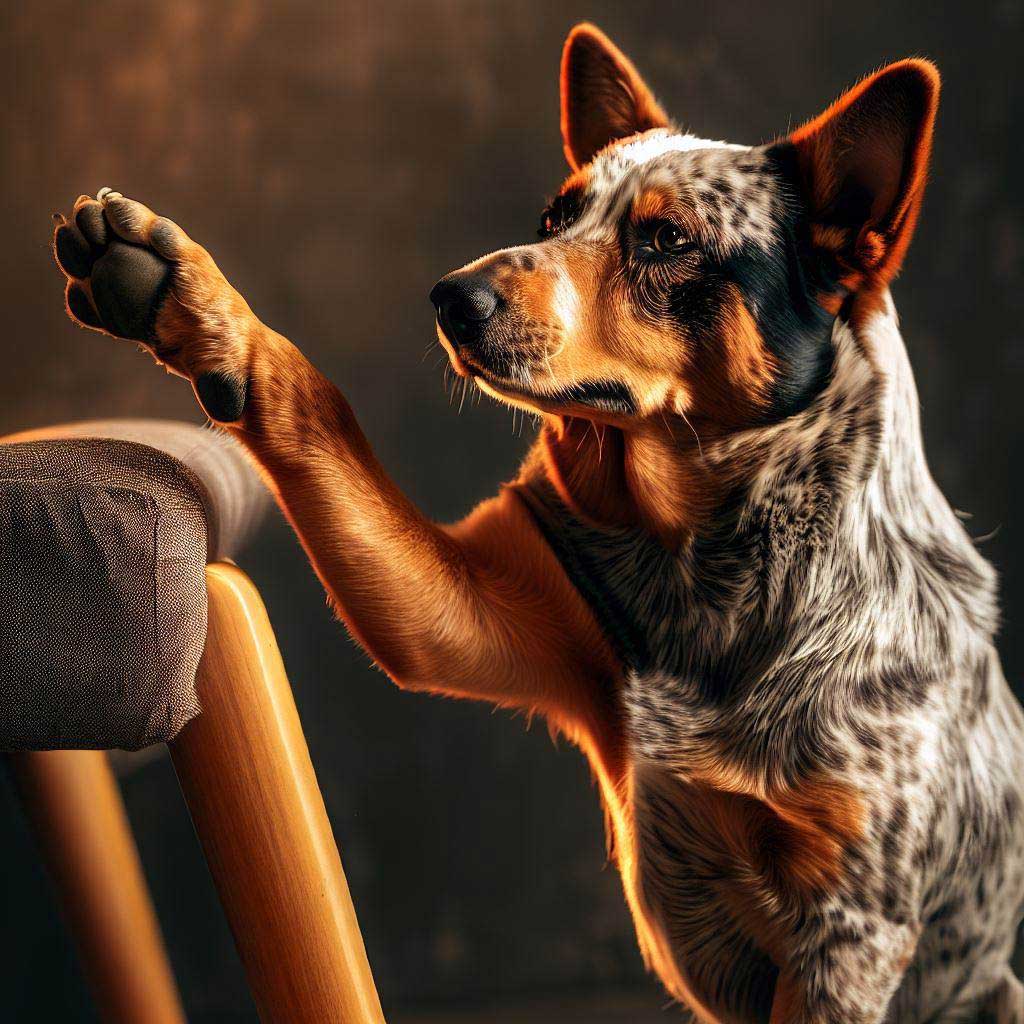What Are the Best Dog Training Tips for Beginners
Dog Training Tips for Beginners: Train Your Puppy Dog Like a Pro. Expert guide to teach skills, overcome challenges, and build a strong bond.
Table of Contents
Introduction to Dog Training Tips for Beginners
Owning a dog is a wonderful experience that can bring immense joy to your life.
However, an untrained dog can sometimes also bring a fair share of frustration. Training your dog can seem daunting, especially for first-time pet owners, but it doesn’t have to be.
Welcome to our comprehensive guide on dog training tips for beginners!
We are here to guide you through this journey, providing you with effective, tested training methods to establish a strong bond with your furry friend.
Understanding Dog Behavior and Communication
Understanding your dog’s behavior and communication methods is the cornerstone of successful training. Dogs are highly expressive creatures, and they use a multifaceted language of signals and behaviors to communicate with their human companions.
Recognizing and accurately interpreting these signals can profoundly improve the training process, strengthen your bond with your dog, and contribute to their overall wellbeing.
Body language
Body language is a significant part of canine communication. Dogs use every part of their body – their eyes, ears, tail, and even their posture – to express a range of emotions. For instance, a relaxed dog typically has a loose, wiggly body and a wagging tail. On the other hand, a scared or anxious dog may lower its body, pin its ears back, tuck its tail between its legs, or even shake or tremble.
Vocalization
Vocalization is another essential aspect of dog communication. Dogs can express a wide range of emotions through different sounds. Barking can signal excitement, fear, boredom, or even an alert to potential danger. Whining or whimpering often indicates distress or discomfort, while growling can be a warning signal to convey that they’re feeling threatened.
Behavioral signals
Behavioral signals, such as changes in appetite, sleep patterns, toilet habits, or any unusual behaviors, can often indicate physical health concerns or emotional distress. Dogs who are experiencing pain or discomfort may display signs such as loss of appetite, increased sleep, excessive licking or chewing at a particular body part, or sudden aggression or fearfulness.
It’s also important to understand the concept of ‘calming signals’ in dog communication. These are subtle signals dogs use to indicate stress, anxiety, or to diffuse potential conflict. Examples include yawning, lip licking, turning away, or sniffing the ground.
Remember, while there are general patterns in dog behavior and communication, every dog is unique. Understanding these signals requires patience and careful observation. Over time, you’ll learn to understand your dog’s individual ‘language’, making your interactions more meaningful and your training sessions more productive.
As you develop this understanding, you’ll be able to meet your dog’s needs more effectively, correct problem behaviors more efficiently, and ultimately create a harmonious living environment based on mutual respect and understanding.
The more you comprehend your dog’s ways of communicating, the stronger your bond will be, ensuring a successful training process and a happier life together.

Training Tools and Aids for Beginners
Training tools can be extremely beneficial to reinforce positive behavior and commands.
Clickers are excellent for marking the exact moment your dog performs a desired behavior. Treat-dispensing toys can keep your pet engaged, providing mental stimulation while promoting good habits. Training leads are useful for teaching leash manners.
Remember, these tools are aids and not replacements for interaction. Your praise and attention are the most significant rewards for your dog.
How Long to Train and How Often
Many beginners wonder about the ideal duration and frequency of training sessions.
Short, consistent training periods often work best. Aim for sessions that last about 15 minutes, repeated several times throughout the day. Longer sessions can overwhelm your dog and reduce their ability to retain information.
By keeping sessions short, you can hold your dog’s attention better and ensure productive training.
Step by Step Training Techniques for Basic Commands
Training your dog to follow basic commands such as “Sit,” “Stay,” “Down,” and “Come” is essential for their safety and well-being.
Start with the “Sit” command. Hold a treat close to your dog’s nose and then move your hand up, allowing their head to follow the treat causing their bottom to lower. Once they’re in sitting position, say “Sit,” give them the treat and share affection.
Similarly, for the “Stay” command, ask your dog to “Sit,” then open the palm of your hand in front of you, and say “Stay.” Take a few steps back and if they stay, give them a treat.
The “Down” command can be taught by holding a tasty treat in your hand, moving your hand down to the ground and letting your dog’s nose follow. Slide your hand along the ground in front of them to encourage their body to follow their head. Once they’re in the down position, say “Down” and give them the treat.
Lastly, the “Come” command can be introduced during playtime. When your dog is a little distance away from you, squat down to their level, stretch out your hands, and say “Come.” Reward them for coming to you with a treat or enthusiastic praise.

Step by Step Training Techniques for Advance Commands
Advanced commands such as “Leave it,” “Heel,” and “Fetch” can be beneficial, particularly in outdoor situations or if your dog exhibits behavioral issues.
The “Leave it” command is crucial to prevent dogs from grabbing harmful objects. Start by holding a treat in both hands, making one hand visible to your dog while the other remains hidden. Say “Leave it” and wait for your dog to stop sniffing your closed hand. Once they do, give them the treat from the other hand.
The “Heel” command helps manage pulling behavior during walks. Use a treat to lure your dog to your side while walking and use the command “Heel” with a treat reward for their compliance.
The “Fetch” command can be taught by throwing a toy and saying “Fetch” as your dog runs after it. Reward your dog when they pick up the toy, and use the “Come” command to get them back to you. You can then teach “Drop it” and reward them once they do.
Ten Top Tips for Successful Dog Training Tips for Beginners
Successful training requires a blend of patience, consistency, and understanding. Here are the top ten tips:
- Be patient: Learning takes time, and every dog learns at their own pace.
- Be consistent: Use the same commands and actions to avoid confusion.
- Use positive reinforcement: Always reward good behavior.
- Keep training sessions short: Multiple short sessions are better than a single long one.
- Understand your dog’s body language: It helps you cater to their needs better.
- Train in a familiar environment: It helps your dog focus better.
- Regular exercise: It helps keep your dog mentally and physically stimulated.
- Socialize your dog: Introduce your dog to different people, places, and situations.
- Avoid physical punishment: It can lead to fear and aggression.
- Make training fun: Keeping a positive, high-energy attitude will make your dog more eager to learn.
Example 7-Day Training Schedule: Dog Training Tips for Beginners
Maintaining a routine can help reinforce training lessons. Here’s an example of a 7-day training schedule:
| Day | Morning Session | Afternoon Session | Evening Session |
|---|---|---|---|
| Mon | Sit | Stay | Sit & Stay combined |
| Tue | Down | Come | Down & Come combined |
| Wed | Heel | Fetch | Heel & Fetch combined |
| Thu | Review & Practice All Commands | Review & Practice All Commands | Review & Practice All Commands |
| Fri | Leave it | Walking on a leash | Leave it & Leash walking combined |
| Sat | Review & Practice All Commands | Socializing & Playtime | Socializing & Playtime |
| Sun | Rest & Play | Rest & Play | Rest & Play |

Handling and Overcoming Challenges During Training
As you embark on the journey of dog training, it’s important to remember that it’s not always smooth sailing.
Many pet owners, particularly beginners, can encounter numerous challenges that can seem daunting. Stubbornness, aggression, fearfulness, and a general lack of responsiveness are common hurdles that can arise during training sessions.
But it’s essential to remember, just like humans, dogs have their personalities, quirks, and individual traits.
One of the most common issues encountered by owners is stubbornness. You might find that your dog repeatedly ignores your commands, appearing ‘stubborn.’
However, it’s crucial to know that dogs don’t act out of spite. What we perceive as stubbornness might often be confusion or a lack of motivation. A dog might fail to respond if they do not understand what is being asked of them or if they do not find the outcome rewarding enough.
To overcome this, focus on clear, consistent communication and ensure that good behavior is rewarded promptly and generously.
Aggression
Another significant challenge is dealing with aggression. Aggression in dogs can manifest in different ways – barking, growling, snapping, or even biting. It can be directed towards people, other animals, or specific objects.
Often, aggression is rooted in fear or a perceived threat to their territory or resources.
To handle aggression, it’s essential to identify the triggers and work on desensitization and counterconditioning strategies. However, handling aggressive behavior can be risky, and it’s often best done with the help of a professional dog trainer or a behaviorist.
Fearfulness, or anxiety, is a challenge that many pet owners face. It can stem from a wide range of causes – past trauma, lack of early socialization, sudden changes in the environment, and more.
A fearful dog might display behaviors like cowering, trembling, excessive barking, or attempting to escape. It’s important to approach a fearful dog with patience and gentleness. Avoid forcing them into situations that they find scary.
Instead, use positive reinforcement to gradually expose them to their fear triggers, helping them build confidence.
However, challenges in training don’t always stem from the dog’s behavior alone. Sometimes, the problem lies in the training methods employed. Every dog is unique, and what works for one might not work for another.
If you find that a particular training technique isn’t yielding results, don’t hesitate to try a different approach. Experiment with various forms of positive reinforcement, modify the training environment, or change the timing of your training sessions.
Empathy
Remember, empathy is your greatest tool when dealing with training challenges. Always strive to understand what your dog is going through. Reacting with frustration or anger can further stress your dog, making the training process more difficult.
Instead, exhibit patience and persistence. Celebrate small victories and remember that setbacks are just part of the learning process.
Above all, never be afraid to seek professional help. If you’re struggling with training your dog or dealing with behavioral issues, consult a professional dog trainer or a behaviorist. They bring expertise and experience and can provide customized training strategies tailored to your dog’s specific needs.
They can also help you understand your dog better, enabling you to foster a stronger bond with your furry friend. With patience, understanding, and the right approach, overcoming challenges in dog training can be a rewarding learning experience for both you and your dog.
Consult a Dog Trainer or Attend a Training Class
If you’re finding the training process challenging, don’t hesitate to seek help from a professional dog trainer or a training class.
A professional can provide personalized training plans based on your dog’s breed, age, and temperament. They can also help address specific issues like excessive barking, chewing, or aggression.
A training class, on the other hand, offers the added benefit of socializing your dog.
Dogs, in all their diverse stages from spirited puppies to dignified seniors, teach us invaluable lessons in patience and love. Engaging in their training is not just about obedience; it’s a dialogue. Each moment spent is a blend of repetition, understanding, and mutual respect. Your commitment, layered with love, shapes your four-legged friend’s behavior and character.
However, there will be times when this dialogue feels more like a monologue. Don’t despair. The digital realm offers a treasure trove of guidance. Specifically, online dog training courses are a boon. To filter the best out of the overwhelming options, delve into “Best Online Dog Training Courses: Any Dog Will Love.” With 15 top courses dissected and the top three spotlighted, your training toolkit is set to expand.

Conclusion: Dog Training Tips for Beginners
Embarking on the journey of training your dog is a rewarding endeavor that is about more than just teaching commands. It is an opportunity to deepen the bond between you and your pet, promote understanding, and create a harmonious living environment.
By following these dog training tips for beginners, you’re not just setting yourself up for success, but you’re also paving the way for a rich, lifelong companionship with your furry friend.
Remember, training is a two-way street. As much as you are teaching your dog, you will also be learning. Understanding your dog’s body language, their triggers, and preferences, will allow you to gain insights into the world from their perspective. This understanding fosters empathy and patience, which are the pillars of successful dog training.
Training also plays a crucial role in ensuring your dog’s safety. Simple commands like “stay” or “come” can prevent potentially dangerous situations. Meanwhile, leash training and teaching your dog to respond to “leave it” can save your pet from ingesting harmful substances.
Moreover, training aids in mental stimulation. Dogs are intelligent creatures that thrive with mental engagement, and training provides just that. It keeps your pet’s mind sharp, promotes good behavior, and alleviates issues like excessive barking or chewing.
In conclusion, while training may pose challenges, it is a journey worth undertaking. The satisfaction of seeing your pet learn and grow, the shared joy of successful training sessions, and the comfort of knowing your dog will respond to you when it matters the most, are immeasurable rewards.
So, equipped with these dog training tips for beginners, take the first step towards a stronger, happier bond with your canine companion. Happy training!
FAQ - Dog Training Tips for Beginners
What are the basics of dog training for beginners?
The basics of dog training for beginners start with understanding your dog’s behavior and communication cues. Using tools like clickers and training leads can be helpful. The basic commands to start with include “Sit,” “Stay,” “Down,” and “Come.” It’s crucial to maintain short and consistent training sessions. Always use positive reinforcement to reward good behavior.
How can I understand my dog’s behavior and communication?
Dogs communicate through a complex system of gestures, postures, and sounds. Observing your dog’s body language, including tail wagging, ear position, and vocalization, can give you insights into their emotions. Also, changes in appetite, sleeping patterns, or unusual fixation with certain body parts could indicate health concerns.
What training tools are recommended for beginners?
For beginners, clickers, treat-dispensing toys, and training leads can be extremely beneficial. Clickers help mark the exact moment your dog performs the desired behavior, treat-dispensing toys can provide mental stimulation, and training leads are useful for teaching leash manners.
How long and how often should I train my dog?
It’s recommended to have multiple short training sessions throughout the day, each lasting about 15 minutes. Overly long sessions can overwhelm your dog and reduce their ability to retain information.
How can I teach my dog basic commands?
Basic commands can be taught using positive reinforcement. Start with simple commands like “Sit” and “Stay.” Use treats, toys, or praise to reward your dog when they follow the command correctly. Be consistent with the command and the reward, and your dog will eventually associate the two.
What are some advanced commands I can teach my dog?
Advanced commands include “Leave it,” “Heel,” and “Fetch.” These commands require more patience and repetition. Use rewards consistently to reinforce these behaviors. These commands are useful for managing your dog outdoors and addressing specific behavioral issues.
What are the top tips for successful dog training?
Successful dog training relies on patience, consistency, and understanding. Always use positive reinforcement to reward good behavior. Keep training sessions short but regular. Understand your dog’s body language, and remember that each dog learns at their own pace. Train in a familiar environment, give regular exercise, and ensure your dog has plenty of socialization.
How do I handle challenges during dog training?
It’s important to approach any training challenges with patience and understanding. These could stem from past trauma, lack of socialization, or medical problems. Instead of responding with frustration, try to identify the underlying issue. If a certain method isn’t working, be flexible and try a different approach.
When should I consult a professional dog trainer?
If you find the training process challenging, or if your dog exhibits serious behavioral issues like excessive aggression or fear, it’s advisable to consult a professional dog trainer. They can provide valuable insights and methods tailored to your dog’s specific needs and temperament.
How do dog training classes benefit my dog and me?
Dog training classes can provide a structured learning environment for your dog, helping them learn new commands and behaviors. They also offer an excellent opportunity for your dog to socialize with other dogs. For owners, training classes can teach effective training techniques and provide a supportive community.
Are dog training books better than online videos?
Dog training books provide a comprehensive guide with theory, but may lack visual guidance. Online videos demonstrate techniques in action, helping you mimic them. Both have their merits; choosing between them depends on your learning style and preference.
What are the 5 golden rules of dog training?
The 5 golden rules of dog training include:
- Consistency in commands and behavior expectations
- Positive reinforcement to reward desired behaviors
- Early socialization to different environments
- Patience and understanding towards your pet
- Regular practice and revision of trained behaviors.
Read our article on The 5 Golden Rules Of Dog Training.
How should I start training my dog?
Start training your dog by establishing a routine and choosing simple commands. Work in a quiet, distraction-free environment. Use positive reinforcement, rewarding your dog with treats or praise, and be consistent and patient.
What commands should I teach my dog first?
Begin with basic commands such as sit, stay, come, and heel. These foundational commands are essential for your dog’s safety and obedience, and they provide a strong base for more advanced training later on.
What is the 1 2 3 dog training method?
The 1 2 3 dog training method involves giving a command and counting to three before enforcing it. It allows the dog a brief moment to respond voluntarily. If the dog obeys, reward it; if not, you follow through by guiding the dog into the desired position.
What are the best dog training tools?
Essential dog training tools include a sturdy leash, a well-fitting collar or harness, treats or clickers for positive reinforcement, and possibly a crate for house training. These tools support different training methods and needs.
Is puppy potty training hard to do?
Puppy potty training can be challenging, but with patience, consistency, and a set routine, it is achievable. Praise and reward your puppy for going outside, and avoid punishment for accidents.
What are 5 quick dog training tips?
Be consistent with commands; 2) Use positive reinforcement; 3) Train in short, focused sessions; 4) Socialize your dog early; and 5) Understand your dog’s body language and cues.
What are the 7 commands to train a dog?
The essential 7 commands include sit, stay, come, heel, down, off, and leave it. These commands create a foundation for obedience, safety, and good behavior. Read our article on What Are The 7 Commands To Train A Dog: Teach Them Right.
How to train a dog at home
Training a dog at home requires a structured routine, consistent commands, and positive reinforcement. Start with basic commands in a distraction-free environment, gradually introducing new challenges and stimuli.
How to train your dog to behave
Train your dog to behave by setting clear expectations, using consistent commands, rewarding desired behaviors, and providing socialization opportunities. Consistency, patience, and understanding your dog’s needs are key.
Are beginner dog training classes useful?
Beginner dog training classes provide professional guidance and a structured environment for both you and your dog. They can be very useful, particularly if you’re new to dog training or facing specific challenges.
What is a dog training basic obedience lesson plan?
A basic obedience lesson plan starts with socialization, followed by fundamental commands such as sit, stay, come, and heel. It emphasizes positive reinforcement, consistent practice, and gradually introduces distractions to solidify learning.
How to train a dog for toilet training
For toilet training, establish a routine, take your dog out frequently, and reward success with treats or praise. Observing signs of needing to go and consistently leading the dog to the desired potty spot are key steps.
How much time does it take to train a dog?
The time to train a dog varies depending on the dog’s age, breed, temperament, and the skills being taught. Basic obedience might take a few weeks, while more complex training can take months or even longer.
What is the one command you must teach your dog?
The “come” command is often considered vital as it can ensure your dog’s safety in potentially dangerous situations. It allows you to regain control and prevent possible hazards.
Is command training done with adopted pets?
Yes, command training can and should be done with adopted pets. Training provides structure and helps strengthen your bond, regardless of the pet’s age or background.
Does training teach a dog to behave with other dogs?
Yes, training, especially socialization, helps a dog learn how to interact and behave appropriately with other dogs. Exposure to different dogs under controlled circumstances aids in this learning process.
Is a terrier puppy hard to train?
a Terrier puppy can be spirited and energetic, making them seem hard to train. However, with consistency, positive reinforcement, and understanding their unique traits, training can be quite successful.
When a puppy dog sits on command, do you reward it with a treat every time?
Initially, you may reward the action with a treat every time your puppy dog sits on command. As the behavior becomes ingrained, you can gradually reduce treats, replacing them with praise or other forms of positive reinforcement.
Would a paid training session for my puppy help?
A paid training session with a professional dog trainer can provide personalized attention and guidance tailored to your puppy’s needs. They can be beneficial, especially for specific challenges or goals.
Can you teach a puppy to be obedient on a farm with other animals?
Yes, a puppy can be taught to be obedient on a farm. Training should include socialization with various animals, consistent commands, and controlled exposure to different farm-related stimuli.
What are the top 3 training tips for a puppy?
The top 3 training tips for a puppy include 1) Starting early with simple commands and socialization; 2) Being consistent with commands and rewards; and 3) Practicing patience, understanding your puppy’s learning pace and needs.
Is it ok to take your puppy to pet friendly cafes and restaurants?
Yes, it’s generally acceptable to take your puppy to pet friendly cafes and restaurants, but it’s essential to consider a few factors. Ensure that your puppy has been trained in basic commands and behaves well in public spaces. It’s also wise to carry essentials like a leash, waste bags, and possibly a water dish. Always follow the establishment’s rules regarding pets, and be mindful of other patrons, making sure your puppy’s presence doesn’t disturb them.









